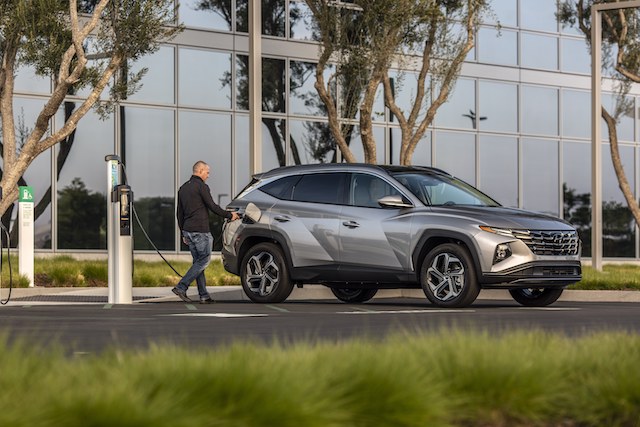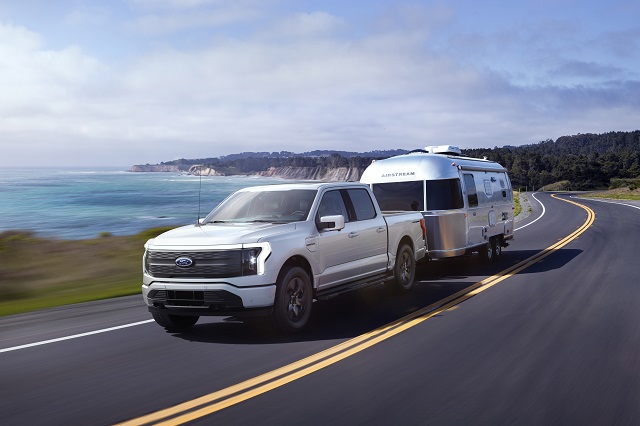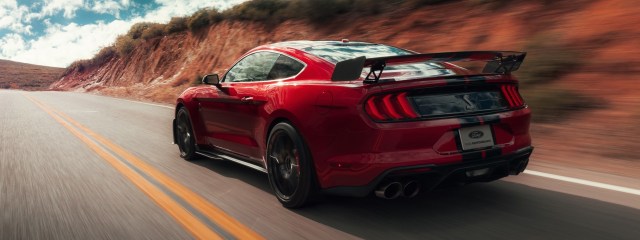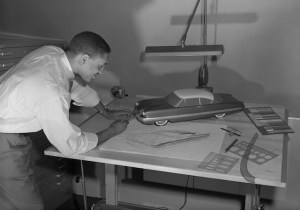On a fateful 18th century day, engineer James Watt was conducting research on ponies lifting coal out of a mine. He determined a single pony could exert 22,000 foot-pounds of work in a minute. (In practical terms, this meant lifting 220 pounds 100 feet high or 22 pounds 1,000 feet.) Watt estimated a horse to be 50% stronger than a pony and increased the number to 33,000 foot-pounds per minute. He called his new unit of measurement horsepower.
Devised long before the advent of automobiles and internal combustion engines, horsepower was never meant to describe an engine’s performance. So, as we know it today, what is horsepower? This same question can be applied to many oft-mentioned automotive terms and features. Whether its through television commercials, car-buying research or conversations with your mechanic, you’re likely bombarded with automotive lingo all the time. But do you really know what it all means?
To help you become a more educated motorist, we rounded up and defined a number of car terms you’ve heard of but might not be crystal clear on.
A, B, C, D Pillars
No need to dust off that architecture textbook, these terms are quite simple. Pillars are a vehicle’s roof support structures. The A pillars are found at the front of the car on both sides of the windshield. B pillars are located between the front and rear doors, and C pillars are toward the back of the car on opposite sides of the rear window. On SUVs, wagons and minivans, the C pillars are behind the rear doors and D pillars surround the back window.

Adaptive Cruise Control
This system automatically adjusts a car’s speed in order to maintain a preset distance from the vehicle in front of it. If a slower car moves ahead of you, the adaptive cruise control will reduce your vehicle’s speed, and vice versa. Advanced versions of the system will slow a car down while traveling around corners and adjust speed based on changes in the posted speed limit.
All-Wheel Drive
All-wheel drive is a type of transmission system that directs power from the car’s engine to all four wheels independently. This provides better traction and handling, particularly in adverse conditions.
There are two types of all-wheel drive: full-time and part-time. The former continuously sends power to the front and rear axles. The latter uses sensors the detect when power is needed for each axle and then turns on automatically. When allowable, the part-time system will switch to two-wheel drive to improve fuel economy.
Alternator
An integral part of a vehicle’s charging system, the alternator is responsible for powering a car’s electrical components when the engine is on. It also charges the car battery when driving. Components inside the alternator rotate to create alternating current (AC), which is transformed into a direct current (DC) that, in turn, charges the battery.
Anti-Lock Brakes
Anti-lock braking systems prevent wheels from locking up during heavy braking situations. By releasing and reapplying the brakes, ABS keeps your tires from skidding, which can help you steer your vehicle during a sudden stop. ABS kicks in automatically, utilizing sensors to detect when the wheel is about to lock up.
Catalytic Converter
Part of your car’s exhaust system, the catalytic converter sits underneath the vehicle between the engine and tailpipe. The device contains precious metals that convert toxic emission gases into less-harmful substances such as carbon dioxide and water vapor. These metals are highly valuable, which explains why catalytic converters are some of the most frequently stolen car parts.
Differential
The differential is a system of gears that allows left and right wheels to rotate at different speeds. Without a differential, you wouldn’t be able to turn your car properly.
Four-Wheel Drive
Like all-wheel drive, four-wheel drive (4WD) systems send power to both the front and rear axles. However, with 4WD, the front and rear driveshafts are locked together. This means both axles spin at the same speed, which provides extra traction on off-road conditions. Typically, 4WD is only found in trucks and SUVs suited for off-road use.
What Is Horsepower?
Simply put, horsepower is the measurement of how much power an engine can produce. Generally, the higher the horsepower, the faster the car. But it’s important to note that horsepower refers to the maximum speed an engine can produce and its ability to maintain that speed. It has less to do with how quickly a vehicle can go from 0-60. (There’s another term for that).

Hybrid, PHEV and BEV
The three most common types of electric vehicles are conventional hybrids, plug-in hybrid electric vehicles (PHEV) and battery electric vehicles (BEV). Conventional hybrids use both a gasoline engine and an electric motor. The motor cannot be recharged through an external source. Instead, it uses a process known as regenerative braking to capture energy and turn it into electricity. Plug-in hybrid electric vehicles are also powered by gasoline engines and electric motors. However, their motors can be charged through an electrical outlet. PHEVs also have the ability to run solely on electricity.
Battery electric cars do not have gas-powered engines. All their power comes from an internal battery, which is recharged through an external source.
Learn more about the differences between the types of electric vehicles.
Kilowatt-Hour
You’re likely familiar with kilowatt-hour (or its abbreviation kWh) from your electric bill. It’s the measure of energy an electrical device needs to run for one hour. A 1,000-watt microwave, for example, requires 1 kWh.
The battery capacity of an electric vehicle is measured in kilowatt-hours. They can range significantly, but generally fall between 40 and 100 kWh. If you have a 100-kWh battery, such as the one found in the Tesla Model S, and the vehicle is operating at 25 kWh, you can drive for four hours before needing a charge. Kilowatt-hours are also a consideration when charging your electric vehicle, which takes us back to that electric bill. If you’re looking to fully charge that same 100-kWh battery, and the going rate of electricity is $0.20/kWh, it will cost you $20.

Torque
In technical terms, torque is the twisting force produced by the engine. Essentially, it’s the power needed to accelerate a car from stationary to high speeds. Torque is particularly important in pickup trucks, as it takes more power to move heavier stationary loads.
Spark Plug
A small but integral part of your car’s ignition system, spark plugs provide the spark that ignites the air-fuel mixture inside a combustion engine. This tiny explosion kickstarts the engine’s pistons into motion, creating the power needed to move your car.
Shocks and Struts
These two components of a car’s suspension system are often used interchangeably, but they are separate components with distinctive jobs. Shocks are hydraulic devices that minimize the movement generated by a car’s springs to create a smooth ride. Struts, meanwhile, are structural components found in some cars. In addition to their role in shock absorption, struts are also an integral part of a vehicle’s steering system, impacting brake performance, wheel alignment and turning ability.
Is there an automotive term or component you’re in the dark about that’s not listed? Let us know in the comments below and we’ll shed some light.
3 Thoughts on “What Is Horsepower? Common Car Terms Explained”
Leave A Comment
Comments are subject to moderation and may or may not be published at the editor’s discretion. Only comments that are relevant to the article and add value to the Your AAA community will be considered. Comments may be edited for clarity and length.
















Please explain brake components, such as pads, rotors and drums, and what would cause them to become damaged and need replacement. This is for a simple compact car, 4-Dr sedan with anti-locking brakes. Would you also please explain the engine air filter and its importance. Thank you!
Timing Belt?
The article states that the catalytic converter is between the engine and the tailpipe. I believe you left out the muffler which comes before the tailpipe.